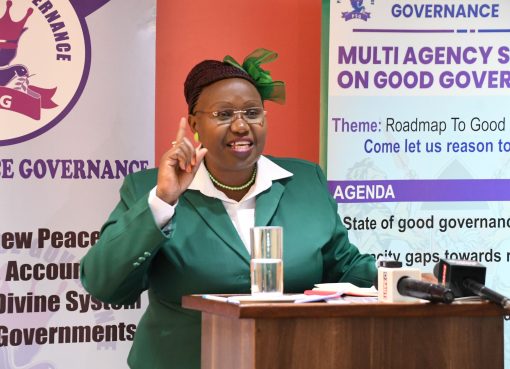The Centre for Mathematics, Science, and Technology Education in Africa (CEMASTEA) is equipping Junior Secondary school teachers with the knowledge and skills needed to effectively integrate Information and Communication Technology (ICT) into the Competency-Based Curriculum (CBC).
CEMASTEA Management Representative (MR) and Coordinator Field Services, Ms. Gladys Masai, said though a good number of teachers today were tech-savvy, most were still learning to use digital devices to source for and develop teaching and learning materials.
Ms. Masai stated that equipping teachers with skills on the effective use of technology, such as computers, laptops, tablets, and cameras, in curriculum delivery promises better methods of content delivery and expands the teaching and learning material resource base.
She indicated that CEMASTEA was capacity-building for JSS teachers to source e-learning and teaching resources such as interactive exam revision applications and video-rich teaching resources to be used by their students.
In an interview with KNA on the sidelines of an ongoing County Trainers Training on Pedagogical Content Knowledge in a Nakuru hotel, Ms. Masai said that through continuous training programmes, CEMASTEA is committed to supporting teachers in ICT integration so they can effectively source for and develop teaching aids and learning materials for the CBC curriculum.
Some 9,595 teachers are undergoing training on the expectations of the ongoing school curriculum reforms that place emphasis on making learners acquire competencies to fit in the 21st century work environment.
The programme being conducted during the April holidays targets Junior Secondary School teachers from 47 counties assigned to teach Pre-Technical Studies, Agriculture and Nutrition.The training is being held in Nakuru, Machakos, and Kisumu counties.
Ms. Masai indicated that a baseline survey conducted by CEMASTEA on JSS teachers last year established that they had challenges in sourcing and developing teaching and learning materials.
While indicating that the teachers were expected to cascade the skills acquired to their colleagues in their respective schools, the coordinator noted that the use of technology could stimulate creativity, help children understand complex topics, and give them tools to learn more independently.
Facilitators explained the rationale for using visual, audio-visual, digital, and multimedia resources in the preparation of learning material and teaching aids.
“In Science, Technology, Engineering, and Mathematics (STEM) subjects, there have been instances where teachers have been unable to get adequate teaching and learning materials. We envision that once they use digital devices to source for the same, they will contextualise the content to fit their local situation,” stated the coordinator.
ICT technologies could enhance the quality of teaching and learning by providing access to a great variety of educational resources and by enabling participatory pedagogies, she added.
She said the resource materials may be used to support, illustrate, explain, or revise specific topics and to provide extra support for individual learners.
Whereas technology could not replace teachers, Ms. Masai argued, it forms an important and additional resource for the teacher and learner.
She noted that the content could support educators by proposing a variety of teaching methodologies and by giving explanations in areas that have previously proved to be difficult for learners and educators.
Technology, noted Ms. Masai, could help teachers overcome the challenge of scarce or outdated textbooks and ensure that teachers can work with others in different schools, pass on ideas, and share teaching and learning materials, which in turn contributes to the promotion of professionalism.
She said that schools and teachers were being encouraged to be innovative and use locally available resources. Also, those schools that are close together can share the resources available within their institutions.
Tabitha Njiru, a mathematics and business studies teacher, noted that by embracing digital devices and connected learning, classrooms around the country and around the globe can not only connect to one another to share insights but also boost learning, experience, and communication skills.
She said the training was aimed at improving the quality of teachers in terms of attitude, pedagogy, mastery of content, resource mobilisation, and utilisation of locally available teaching materials.
Ms. Njiru noted that in the CBC curriculum, teachers were expected to use a variety of teaching strategies and resources that involved the learner, while learners, on the other hand, were expected to be active and responsive during lessons so as to construct knowledge, skills, and attitudes.
By Anne Mwale





